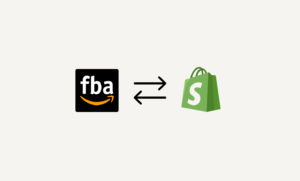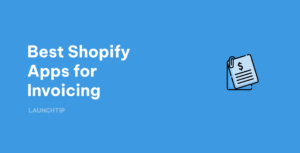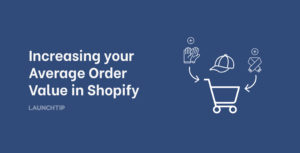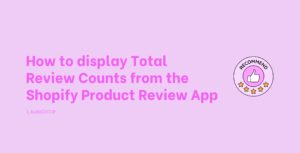Last Updated on by Dan S
Originally Published August 11, 2020.
Here’s what to consider when launching and running an online store with Shopify
If you’re looking at starting up your own Shopify store, there are some things to consider that’ll help you make the right choices along the way. If you are looking for a Step-by-Step guide on how to setup a store from scratch with no prior experience, check out this post.
Choosing a domain
When you set up a Shopify store, you’ll need to choose a domain. You are given a free myshopify.com URL to begin with, but it’s recommended to use a custom domain. This is important for your brand and image and it’s also needed to submit your sitemap to Google so they can crawl your store and include you in search results.
You can buy custom domains from the likes of GoDaddy and 123-Reg. Shopify also offer custom domains, which start at $11 USD per year along with their new email hosting. If you decide to use a third-party domain provider, then you could use G Suite or Zoho for your mailing solution. Zoho offer a free plan, which is good.
Select a price plan
You will need to choose a Shopify pricing plan depending on your business needs. Shopify offers three price plans:
- Basic Shopify – $29 USD per month
- Shopify – $79 USD per month
- Advanced Shopify – $299 USD per month
If you are just starting out and are unsure of the plan you need, the Basic plan will be enough to get you going. However, we advise that this particular plan has the highest payment card processing fee and a 2% additional fee for the use of third-party payment gateways.
When your business gets going and pulls in the revenue, the Professional plan will be the best. It allows you to view additional reports and has lower payment card fees. The Advanced Shopify Plan is the top plan for established companies.
Choose your store’s theme
Once you’ve got your domain and selected your Shopify plan, it’s now time to choose your store’s theme. This will distinguish the look and style of your store. There is a large range of free and paid themes, and Shopify’s theme store is easy to navigate. If you purchase a theme and need help with installation, you may have to deal with a third-party, as Shopify only supports its own themes.
Enhancing your store with apps
You might find that the functionality that’s included in your Shopify plan doesn’t quite meet your needs. There’s no need to worry. You can enhance your store with Shopify apps. The Shopify app store has hundreds of apps that you can install on your Shopify store. There are free and paid options. Some of the apps are developed by third-parties, so always check their reviews before installing their apps. Check out SellUp and Delivery Timer, which are fantastic apps for ecommerce stores.
Choosing your stock
Not only do you have to take into account the running costs of your Shopify business, but also the inventory cost. There are many ways to manage inventory and stock levels in a store. You can either buy a large amount of stock and store it in a warehouse or you can use dropshipping. Many new businesses are now turning to dropshipping, as it keeps their costs lower. As the store owner, you don’t have to stock or find a place to stock your products. When a customer places an order through your store, that order automatically goes to the dropshipping provider you have chosen. They then pack and ship the product on your behalf, meaning the product never touches your hands.
Time to market
It’s super important to market your business and products, as that’ll be how you get sales. You must budget for online marketing. You can spend less on a campaign but get no sales or spend more on a campaign and get good results. It’s all about how much effort you put in.
Email marketing has proven very popular, as it gives a big return on investment (ROI) and you don’t have to spend a lot on it. If you have all the necessary email capture points set up correctly, at checkout, in popups and for newsletter sign ups, you already have your email marketing list there. The main cost in email marketing is the platform that you use, for example, Mailchimp or MailerLite and potentially any copywriting skills that are needed.
Other avenues of online marketing include Google, Facebook and Instagram. You’ll need to have in mind the kind of audience you want to target and how you plan on reaching them. Different audiences use different platforms, so finding out who and how you want to target is important. The cost of these marketing channels is based on Cost Per Click (CPC).
Let’s conclude
To conclude, no two businesses are the same, so the running costs will vary from business to business. All that’s been discussed above should set you up on the right track to creating a successful business.










